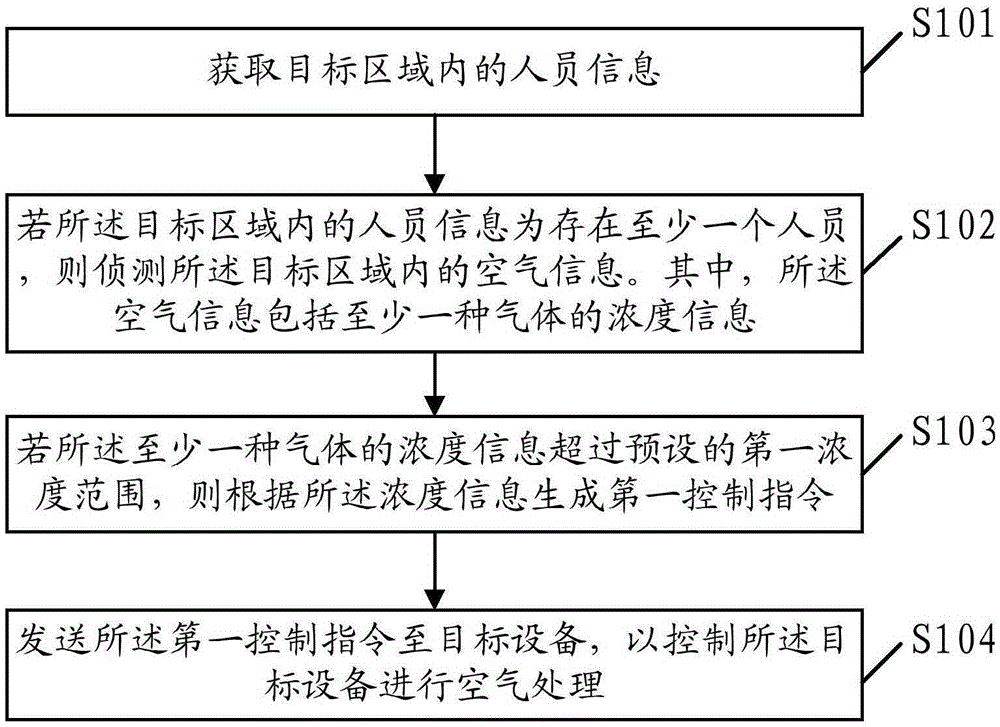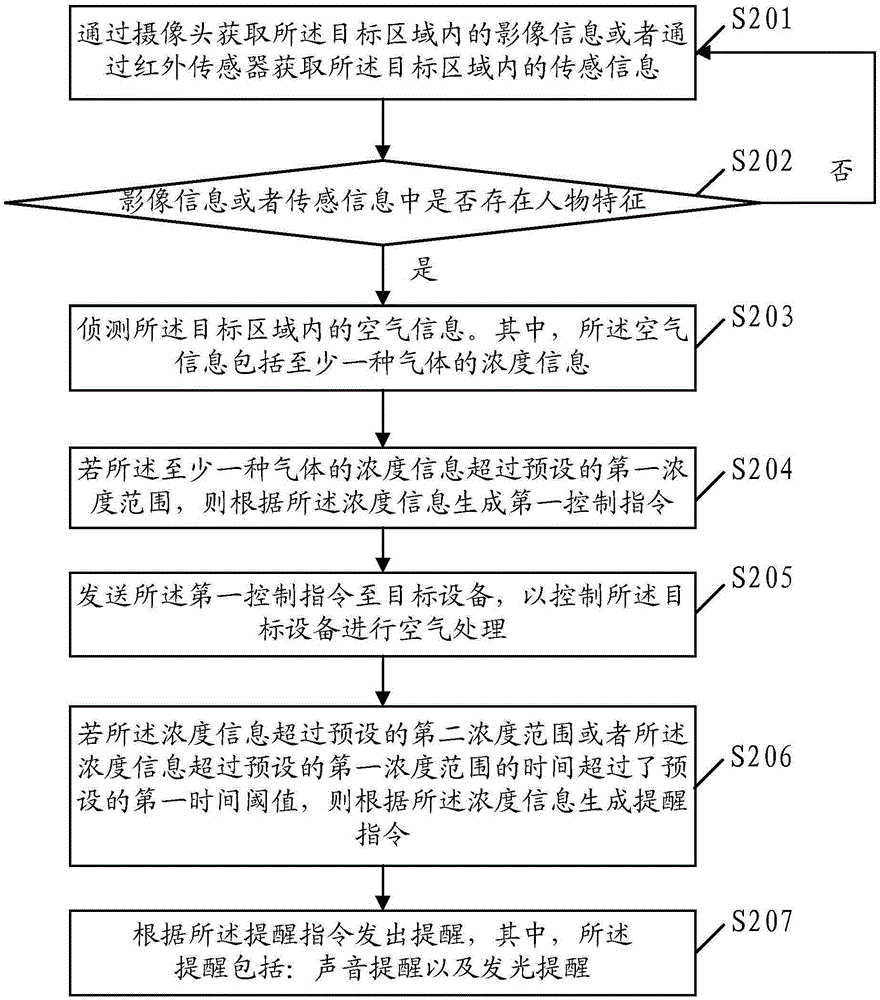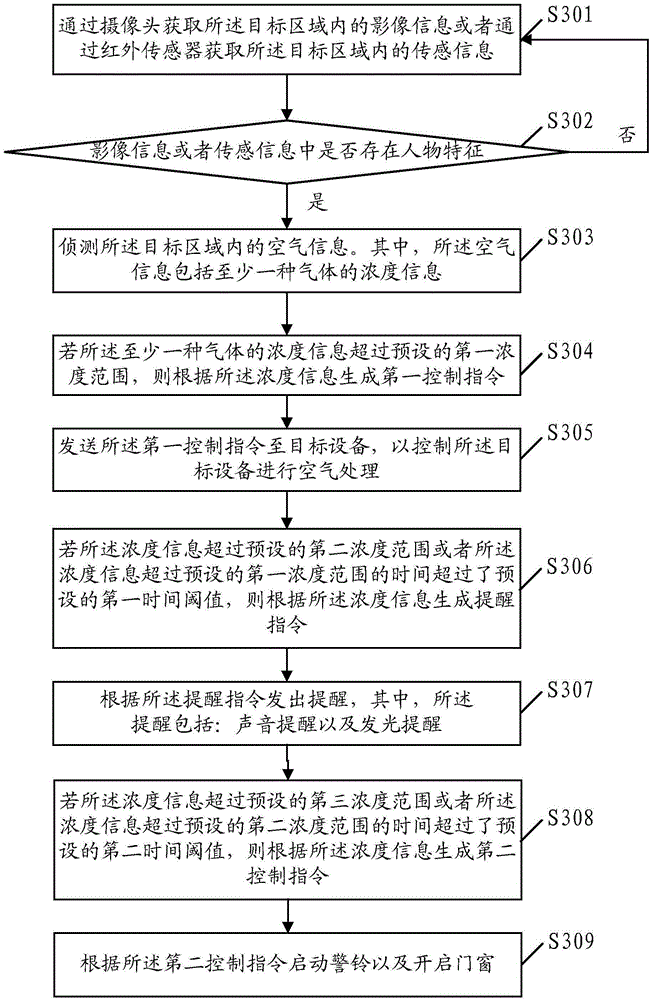Control method and device
A control method and control device technology, applied in the electronic field, can solve problems such as insufficient intelligence, inability to handle, and poor user experience, so as to achieve the effect of saving energy consumption and improving user experience
- Summary
- Abstract
- Description
- Claims
- Application Information
AI Technical Summary
Problems solved by technology
Method used
Image
Examples
Embodiment Construction
[0047] The following will clearly and completely describe the technical solutions in the embodiments of the present invention with reference to the accompanying drawings in the embodiments of the present invention. Obviously, the described embodiments are only some, not all, embodiments of the present invention. Based on the embodiments of the present invention, all other embodiments obtained by persons of ordinary skill in the art without creative efforts fall within the protection scope of the present invention.
[0048] figure 1 It is a flow chart of the first embodiment of a control method provided by the embodiment of the present invention. In this embodiment, the control method is applied to a terminal, and the terminal may be an electronic device such as a smart phone, a tablet computer, a computer, or an e-book, or may be a wearable device such as a smart bracelet or a smart watch, or may be a Air conditioners, fans, air purifiers and other air treatment equipment. T...
PUM
 Login to View More
Login to View More Abstract
Description
Claims
Application Information
 Login to View More
Login to View More - R&D
- Intellectual Property
- Life Sciences
- Materials
- Tech Scout
- Unparalleled Data Quality
- Higher Quality Content
- 60% Fewer Hallucinations
Browse by: Latest US Patents, China's latest patents, Technical Efficacy Thesaurus, Application Domain, Technology Topic, Popular Technical Reports.
© 2025 PatSnap. All rights reserved.Legal|Privacy policy|Modern Slavery Act Transparency Statement|Sitemap|About US| Contact US: help@patsnap.com



